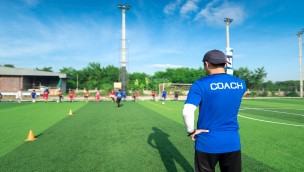Plantar fasciitis (heel pain)
One of the most common causes of heel pain.

Plantar fasciitis is considered an overuse of the plantar fascia, a band of tissue (ligament) that supports the arch of the foot. It is basically a shock absorber, but over time its shock absorbing abilities can become less and less as symptoms increase. Runners are often affected.
Risk factors
Several risk factors for developing the condition have been proposed, but the evidence is not conclusive. People who are overweight or obese compared to normal weight have been shown to be at higher risk. Athletes (and especially runners) with low and high foot arches seem to be at higher risk of developing the condition. Foot biomechanics may also play a role, especially if coupled with excessive training and insufficient rest. Weakness of the lower extremity may also increase the impact on the foot, and that can contribute to the development of symptoms.
Signs and symptoms
Pain develops gradually and can be localised underneath the heel and along the foot arch. This area tends to be very sensitive to pressure. In the beginning, it can often be painful in the morning, but better with activity. At a later stage, pain increases during and after exercise and can persist for a long time. If treatment is not initiated early, symptoms usually worsen. In some cases there is pain with nearly any type of activity.
Diagnosis
The diagnosis is made by a doctor or physiotherapist following a clinical examination. Ultrasound can confirm the diagnosis.
Treatment
Treatment of plantar fasciitis consists of both symptomatic treatment and exercise. For a period of time, activities that cause pain should be put on hold or modified until symptoms subside. Icing may give short-term pain relief. In an early phase, it is advised with stretching of the calf muscles and the plantar fascia. Some also get pain relief from taping the heel.
The most important measure in the course of treatment is strengthening exercises for the foot and calf muscles, exercises for motoric control and fitted, comfortable shoes. Cortisone injections can be tried if treatment does not have a desired effect, but results are varying.
Prognosis
With early management, most recover completely and return to their previous sports participation level. Symptoms should be taken seriously. Ignoring them is not a good idea. Pushing through the pain or trying to mask symptoms by using painkillers will, in most cases, just prolong the rehabilitation period. If you have plantar fasciitis, you are looking at anywhere from 6 to 18 months before the condition has resolved.


